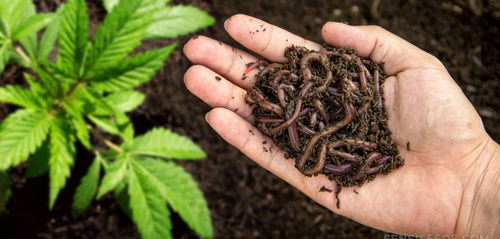#93: From Morocco to the World: The Evolution of Moroccan Hash
#93: From Morocco to the World: The Evolution of Moroccan Hash
For all the types of hash that exist, Moroccan hash is arguably one of the most well-known and highly sought-after. If you grew up in Quebec in the 70s or 80s, chances are the hash you bought on the streets was Moroccan hash. Its popularity and availability helped establish hash as a staple in Quebec's cannabis culture, distinguishing it from other regions where dried flower was the dominant form of consumption.
Does the mention of Moroccan hash bring back memories for you? If so, you're not alone. The history and cultural impact of Moroccan hash is not only significant in Quebec, but it also holds a special place in the hearts of many cannabis enthusiasts across the country.
The genesis of Moroccan hash

While cannabis cultivation in Morocco dates back to the 7th-15th centuries during the Arab invasions, hashish production itself is a relatively recent development. Contrary to popular belief, Moroccan hash-making began in the 20th century, not centuries ago.
The technique for making hashish was introduced to Morocco by Western travellers in the mid-20th century. During the hippie hashish trail of the 1960s and 70s, European and American travellers would journey through countries like Lebanon, Afghanistan, and Pakistan where hashish production was traditional.
Moroccans quickly adopted and refined the dry-sieving techniques brought by these travellers. The climate conditions in Morocco, similar to traditional hash-producing regions like Lebanon and Afghanistan, were ideal for this method. And thus, Moroccan hash was born.
Morocco rapidly became a major producer of hashish, challenging Afghanistan as the world's leading producer. It became the primary source of hashish for the Canadian and European markets, with Quebec and the Netherlands being major importers.
How Moroccan hash is made
The traditional Moroccan hash-making technique is known as "dry-sieving". The process involves sieving dried plants to collect resin powder (a process known as "shifting"). Shifting involves several key steps:

Harvesting and drying: Cannabis plants are harvested and dried, often on rooftops in full sunlight.
Sieving setup: A fine mesh or sieve is placed over a bucket or similar container.
Plant preparation: The dried cannabis plants are placed on top of the mesh.
Containment: The entire setup is wrapped with plastic to prevent resin loss.
Beating process: The dried plants are beaten with sticks to release the resin glands (trichomes).
Collection: The resin glands pass through the sieve holes and collect at the bottom of the container.
Refinement: Some producers realized that grinding the plant material before sieving yielded more resin, though this also increased contamination.
Over time, Moroccan hash producers have modernized their techniques and introduced new methods including the use of mechanical presses and refined sieving machines. However, traditional methods are still valued for their artisanal quality and cultural significance.
This process of producing dry-sieve hashish requires patience, skill, and experience. The resin powder must be carefully collected and pressed to ensure a high-quality finished product. Once the hashish is formed into bricks or balls, often using heat and pressure, it is left to dry and cure for several weeks before being sold.
The signature elements of Moroccan hash
With a distinct aroma, flavour, and texture, Moroccan hashish is highly sought after by cannabis enthusiasts around the world. Not only is it known for its high potency, but also for its smooth and flavourful smoke. Here are some of the key attributes that make Moroccan hashish stand out from other types of cannabis products:
Appearance: Moroccan hash typically has a dark brown to black colour with a glossy exterior.
Texture: It has a smooth and pliable consistency, ranging from soft and moldable to harder and more brittle, depending on the production method.
Flavour: Earthy, spicy, slightly sweet, and herbal are all common flavours found in Moroccan hashish.
Aroma: The common scent notes of Moroccan hash include pine, pepper, citrus, anise, and other earthy tones.
Potency: Known for its high levels of THC, Moroccan hash can have a potency ranging from 20% to 60%.
Effects: Users can expect a profound experience characterized by deep relaxation and euphoria.
Unique qualities: Known for providing a calming and sedative effect, potentially helpful for stress relief, pain management, and insomnia.
The aromatic experience alone is enough to make enthusiasts fall in love with Moroccan hashish. But the combination of all these attributes truly sets Moroccan hash apart. It offers such a diverse range of flavours and effects that it can satisfy just about any cannabis connoisseur.
The timeless appeal of Moroccan hash
The rich history, distinct profile and potent effects of Moroccan hash make it a coveted product in the cannabis world. For Quebecers who grew up with hash of the 70s and 80s, trying Moroccan hash can be a nostalgic trip back in time. But for all cannabis enthusiasts, whether new or experienced, exploring the treasured tradition of Moroccan hash is an experience not to be missed. If you're looking for a truly unique and authentic cannabis experience, you're going to want to give Moroccan hash a try.
Back to all posts










